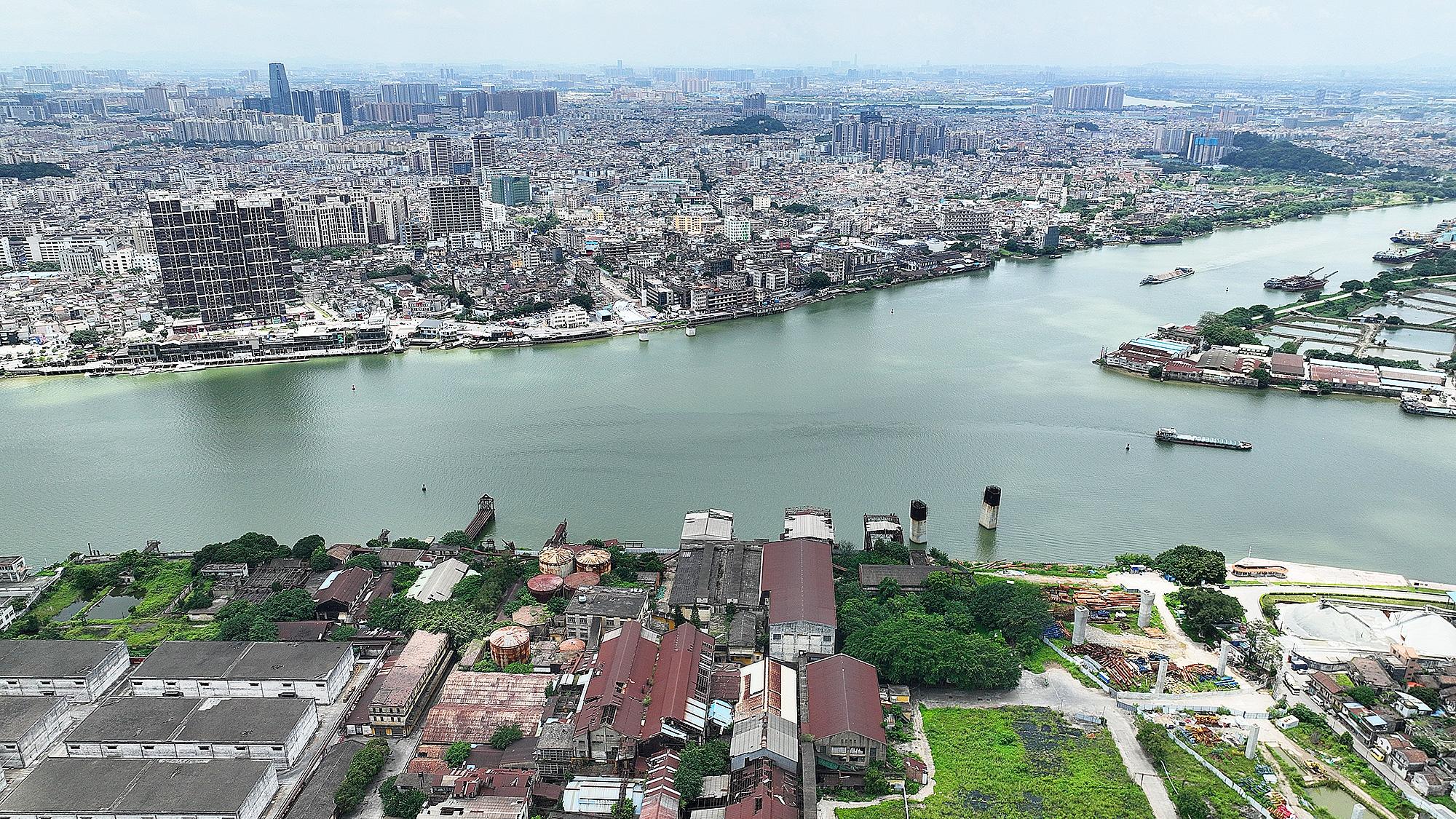 This file photo taken in May 2023 shows an aerial view of Foshan’s landscape. (JACK YAO / CHINA DAILY)
This file photo taken in May 2023 shows an aerial view of Foshan’s landscape. (JACK YAO / CHINA DAILY)
The cargo throughput of Foshan Port surged by 19.2 percent year-on-year to 102 million tons in 2023, marking the first “100-million-ton port” in the inland rivers of Guangdong province, according to the latest data from the Foshan Municipal Transportation Bureau.
Guangdong has six ports generating over 100 million tons of cargo throughput — Guangzhou, Shenzhen, Zhanjiang, Dongguan, Zhuhai, and Jiangmen — but they are all coastal ports.
Foshan Port has taken the lead among all inland ports in the province to join the 100-million-ton club, indicating a historic leap for Foshan's inland shipping industry and injecting new momentum into the development of the Guangdong-Hong Kong-Macao Greater Bay Area.
Foshan Port has taken the lead among all inland ports in Guangdong province to join the 100-million-ton club, indicating a historic leap for Foshan's inland shipping industry and injecting new momentum into the development of the Guangdong-Hong Kong-Macao Greater Bay Area
Foshan is located in the hinterland of the Pearl River Delta, with the Xijiang River, Beijiang River and their tributaries running through the entire territory. Among them, the Xijiang River is the second largest shipping waterway in the country, second only to the Yangtze River.
ALSO READ: Foshan: Robots on the march
As a transit hub among rivers and seas, Foshan Port serves both domestic and international trade, primarily focusing on the transportation of containers, energy, raw materials, industrial products, and construction materials.
Foshan has vigorously promoted the innovation of more direct and convenient customs clearance models with other large ports in the past two years to improve logistics efficiency and reduce corporate costs.
Currently, 11 port terminals in the city are interconnected with Shenzhen Shekou Port and Guangzhou Nansha Port. The logistics time for waterborne cargo has been shortened from five to seven days to less than two days, and logistics efficiency has increased by more than 60 percent.
“The substantial scale and growth of Foshan’s manufacturing industry have generated strong demand for logistics services,” said Lin Jiang, a professor at the Department of Economics of Lingnan College, Sun Yat-sen University.
READ MORE: Traffic police fix fork in Foshan freeway
He said he believes the convenient and efficient integrated transportation system can enhance logistics efficiency, reduce transportation costs, and facilitate the flow and aggregation of various production elements, providing robust support for local manufacturing industry.


